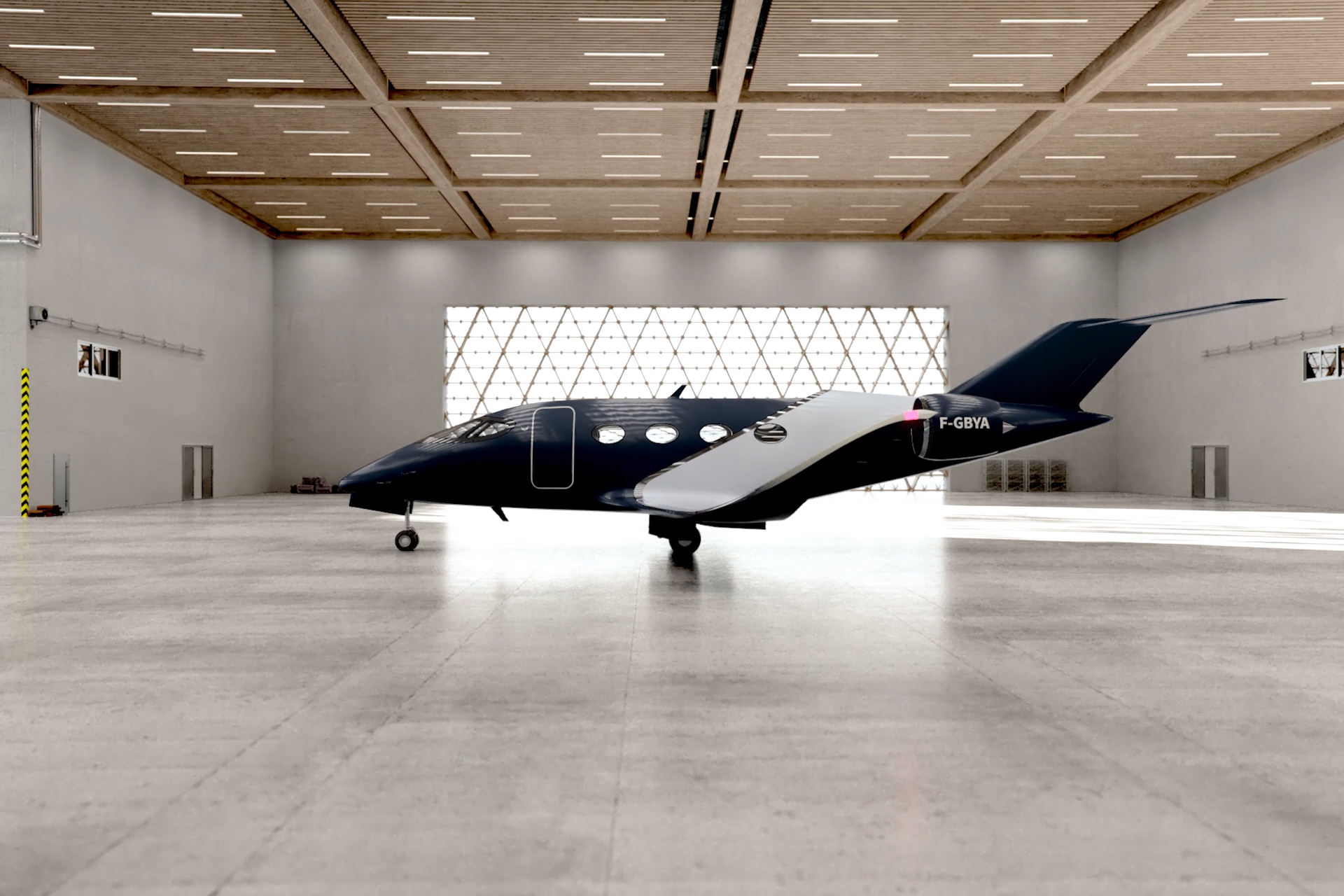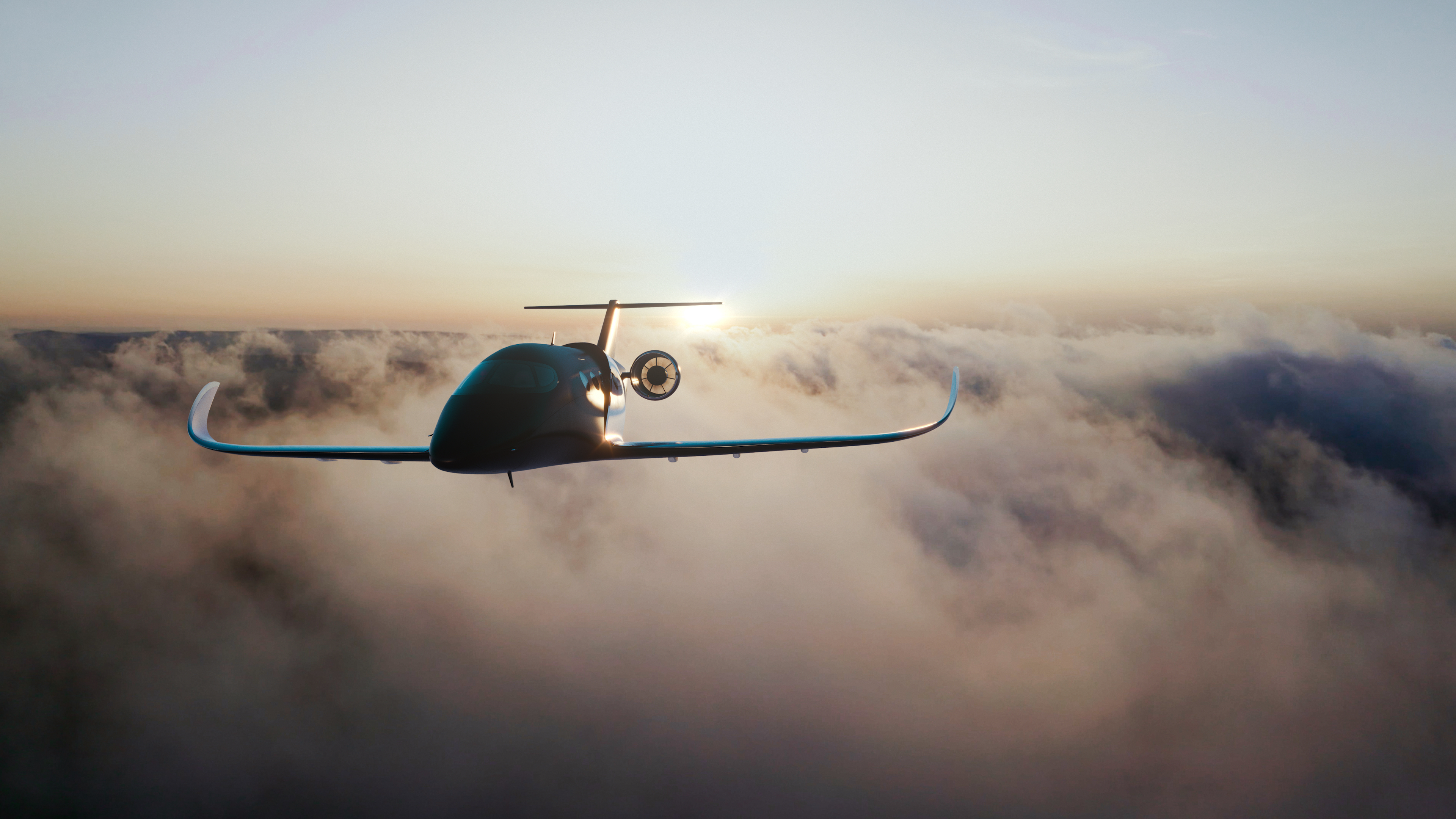
The aviation industry is well aware of its carbon footprint, but it’s not an industry where things change quickly. Batteries may be an option for short-range eVTOL use cases, but for anything else, they still weigh too much compared to the amount of energy they can hold. There’s another option, though: hydrogen. That’s what Toulouse, France–based Beyond Aero is betting on, as it looks to bring a hydrogen-powered business jet to market.
The company, which is part of our Battlefield startup competition at Disrupt this week, is currently ground-testing an 85 kW hydrogen-based propulsion system, with flight tests of its single-engine test bed scheduled for later this year. The company plans to launch with a business jet, the Beyond Aero One, with a range of up to 800 nautical miles, a speed of about 310 knots (or just over 356 miles per hour) and seating for up to eight passengers. The vision is significantly broader, though, with plans to launch a commuter jet and potentially even larger planes in the future.

Image Credits: Beyond Aero
The company was founded by longtime friends Eloa Guillotin (CEO), Hugo Tarlé (CTO/COO) and Valentin Chomel (Product and Strategy). While Guillotin and Tarlé are in entrepreneurship, Chomel worked in the aerospace industry before. While working on flight test instrumentation at Safran, one of the world’s largest aircraft equipment manufacturers in the world, he discovered eVTOLs and hydrogen propulsion systems. Chomel started his PhD, focusing on the technology roadmap to electrification, but in the evenings, he would end up talking to his two friends who were also looking for what to do next and dabbling in IoT and sports tech.
“I said, ‘Guys, you are passionate about aircraft, let’s build an aircraft as a company.’ There is a huge market opportunity because everything will need to change,” Chomel told me.
Things started snowballing from there, with Chomel then quitting his PhD and the three of them starting the company from the ground up.
Chomel argues that in many ways, it’s easier for a startup to build an aircraft from the ground up than for a large business like Boeing or Airbus to make the switch from their existing systems to something entirely new. The founders also argue that it will take a very long time before electric aviation will take off. Hydrogen fuel cells, on the other hand, are already being deployed widely in heavy ground transportation, including buses and trucks. “Basically, our aircraft is three trucks,” Chomel joked.

Image Credits: Beyond Aero
The challenges, he noted, are mostly around hydrogen storage and thermal management for hydrogen in an aviation setting. The company has a number of patents around this already. One involves placing the hydrogen tanks in a fairing under the aircraft’s main body, while another covers a heat management system. The hydrogen system needs a relatively large heat exchanger, which would create additional drag on the plane, reducing its range and with that, its usefulness. “All of our IP is in how to make a hydrogen aircraft — not how to make a hydrogen powertrain. We haven’t revolutionized that,” he said. Instead, the team’s focus is on integrating all of these systems.
Beyond Aero’s current focus is on getting its demonstrator into the air and testing its core assumptions. After that, it will start work on the business jet. Given the massive carbon emissions of business aviation per passenger mile flown, the team believes that this isn’t just technologically achievable but also a massive market that is asking for an alternative to today’s jet fuel–burning engines. “We want to meet a market with clients that have a problem with the public image [of private jet ownership], personal conviction or ESG goals of their company,” Chomel said. Those clients have millions of dollars available to buy a Falcon or Gulfstream, but those players don’t offer any alternatives either.
Beyond Aero was part of Y Combinator’s Winter ’22 batch. The company raised funding before joining YC, during and after, for a total of three rounds so far, with Initialized, Air France and a number of unicorn founders investing in the company over the course of these rounds.
The team argues that it can rely on the vast existing aviation ecosystem for acquiring all of the parts it needs to build its plane, including the actual airframe. One challenge it will likely face, though, is ensuring that enough aircraft have hydrogen available for its plane to refuel. Hydrogen itself is already widely available, but there is no refueling infrastructure yet and there is obviously a bit of a chicken-or-egg problem here: Nobody is going to buy a jet they can’t reliably refuel and nobody is going to invest in building that infrastructure until there is demand.
Chomel argues that airports would only need to have a mobile hydrogen tanker trailer available, though even that takes a bit of an investment, all while these airports are also looking to move to sustainable aviation fuel and away from leaded 100LL fuel for the general aviation piston fleet.